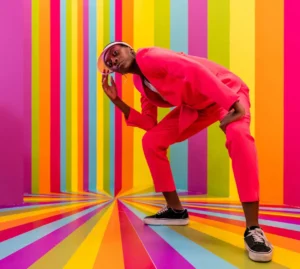Requirements of Color Qualities for Fashion Design
Colors have psychological connotations that go beyond aesthetics and can affect how people perceive and behave. Red, for example, is frequently linked to ardor, strength, and energy, whereas blue is connected to stability, trust, and serenity. Colors have psychological connotations that go beyond aesthetics and can affect how people perceive and behave. Red, for example, is frequently linked to ardor, strength, and energy, whereas blue is connected to stability, trust, and serenity. In this article, we discuss the Requirements of Color Qualities for Fashion Design.
Fator Requirements of Color Qualities for Fashion Design
Color qualities are achieved by a combination of light or dark, the results are the effects it creates on a design and ultimately to the personality of the wearer. Following are the different color qualities for Fashion Design:
- Tone
- Light colors
- Dull colors
- Dark colors
- Vivid colors

Tones
The tone is formed by mixing white or black with the base color. The tone is also regarded as an intensity of color. For e.g. if dullness has to be achieved for a particular basic color, grey (a combination of black & white in correct proportions) is added to it. This results in the degradation of the intensity of the basic color and makes it more dull.
Light colors
The addition of white to a basic color results in a lighter shade of any color. The hue is relatively important. Characteristics of light colors are soft and ethereal. Light colors are popular in women’s wardrobes, but they lack the eye-grabbing quality that most designers seek, but a light color can be effective in its own way actually stand out from the brash overconfident color scheme that surrounds it.
Dull colors
The addition of grey to a basic color reduces the brightness, hence a dull color is achieved. Dull colours are vague and diffuse, and create a blurry effect. However dull colour help reduce tension and can give colour scheme a meditative dream-like mood. Addition of more grey result in muddy shades.
Dark colors:
Combination of primary base to the basic colours result in darker shade. Dark colors are often associated with royalty and have an aura of almost ponderous dignity for e.g. dark red, dark blue, dark purple, dark green, etc. Black shade gives a feeling of heaviness or adds weight to a design. Dark colours are often found in men’s suits and formal wear. These colours aer usually paired with lighter colours and more conventional to use.
Vivid colors
They are also called as surprising colours. The vivid or bright colours have powerful personality. They have a tendency to stand apart among other colours, but combination of two or more vivid colour is confusing. A vivid color scheme is tricky, the use of these colors is fine but they have a tendency to tire eyes very quickly,e.g. fluorescent colors such as fluorescent orange, lemon yellow, striking pink, electric blue, and fluorescent.
Conclusion
To sum up, color is an effective tool in any fashion designer’s toolbox. Through the mastery of hue, saturation, value, undertones, and psychological impact, color designers can release their creative potential and utilize color to communicate their own vision. The intelligent use of Color Qualities for Fashion Design takes fashion design to new heights, engaging viewers and making a lasting impact, whether the goal is to achieve big declarations or subtle elegance.
- You may love to read: Understanding Fundamentals of Color Theory in Textile Design
